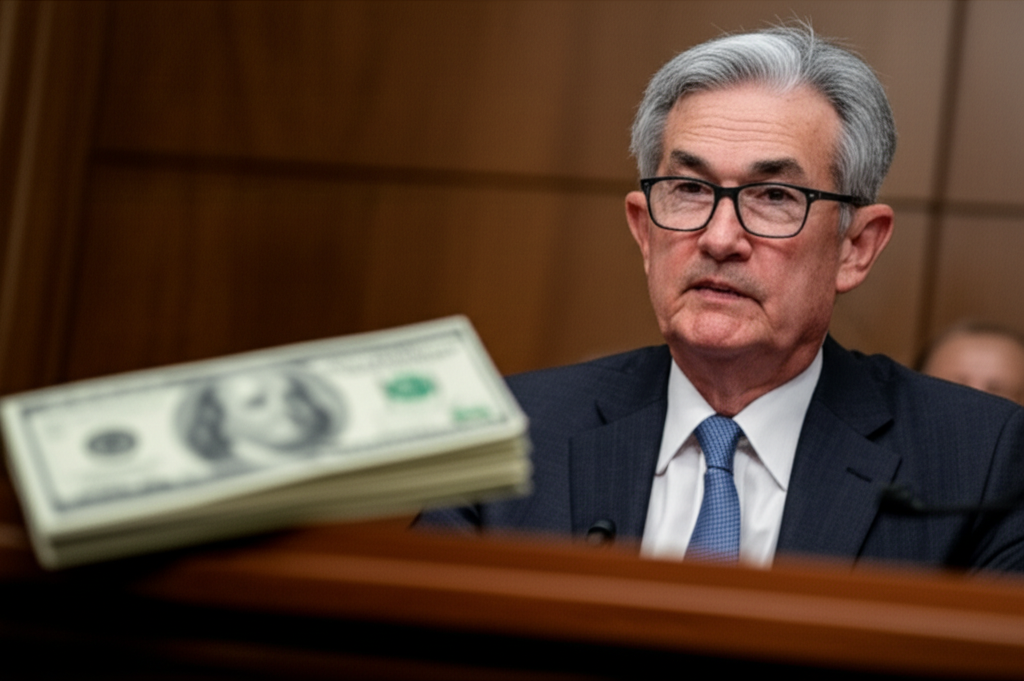Fed Aftermath: Core Inflation Is Back to 2%So Why the Hawkish Tone?
The air crackled with anticipation as financial markets absorbed the Federal Reserve’s latest policy announcements. On the surface, the data seemed to offer a sigh of relief: core inflation, a key metric for policymakers, appeared to be inching closer to the central bank’s elusive 2% target. For many, this suggested a dovish pivot was imminent – a signal that interest rate cuts could soon be on the horizon, easing the burden on borrowers and perhaps reigniting growth. Yet, the message from the Fed was anything but conciliatory. Instead, Chairman Jerome Powell and his colleagues maintained a distinctly hawkish tone, emphasizing a “higher for longer” stance and cautioning against premature celebrations. This apparent contradiction begs the question: if core inflation is indeed nearing the target, why the continued vigilance and reluctance to loosen the monetary reins?
To unravel this paradox, we need to dive deeper than just the headline number. Firstly, it’s crucial to understand which inflation measure the Fed prioritizes. While Consumer Price Index (CPI) often grabs headlines, the Federal Reserve primarily focuses on the Personal Consumption Expenditures (PCE) price index, especially the “core” PCE, which strips out volatile food and energy components. When some reports suggest core inflation is at or near 2%, they often refer to the *annualized six-month* or *three-month* rates of change. These shorter-term measures can indeed show disinflationary trends converging toward the target. However, the Fed’s ultimate goal is to see the *year-over-year* core PCE inflation sustainably at 2%, and this measure, while declining significantly from its peak, has often remained stubbornly above the target. The central bank is wary of celebrating a victory based on short-term trends that might prove fleeting.
Beyond the specific metric, the composition of inflation is equally critical. The disinflation seen so far has largely been driven by a normalization of goods prices, which surged during the pandemic due to supply chain disruptions and shifts in consumer demand. As supply chains healed and demand patterns stabilized, goods inflation moderated considerably. However, the stickier component of inflation lies in services, particularly shelter (housing costs) and non-housing services. Shelter inflation, which operates with a significant lag, continues to exert upward pressure on overall prices, even as market rents start to cool. Wage growth, while beneficial for workers, also feeds into services costs, as labor is a primary input for many service industries. If wage growth outpaces productivity gains, it can contribute to persistent inflationary pressures, and the labor market, despite some cooling, remains robust with low unemployment and solid job creation.
The Fed’s cautious stance also reflects its lessons learned from past inflationary cycles and its commitment to credibility. After initially underestimating the persistence of inflation in 2021, the central bank is now determined to avoid a premature declaration of victory that could allow inflation to re-accelerate. History has shown that easing monetary policy too soon can lead to a resurgence of price pressures, forcing the central bank to hike rates again, potentially causing even greater economic disruption. This “stop-start” approach is something the Fed is keen to avoid. Instead, it aims to ensure that inflation expectations remain firmly anchored at 2%, preventing a self-fulfilling prophecy where consumers and businesses anticipate higher prices and act accordingly. The “higher for longer” mantra isn’t just about current data; it’s about signaling a strong commitment to long-term price stability.
In essence, the Federal Reserve isn’t just looking in the rearview mirror at one specific data point. It’s assessing the entire economic landscape: the trajectory of all inflation components, the strength of the labor market, the state of financial conditions, and potential risks that could reignite price pressures, such as geopolitical events or unexpected supply shocks. The hawkish tone, therefore, isn’t a sign of disbelief in the progress made; rather, it’s a strategic move to manage expectations, solidify disinflationary trends, and ensure that the battle against inflation is truly won and sustained, not just temporarily subdued. For young adults navigating this economy, understanding these nuances is key. While the prospect of lower rates may feel distant, the Fed’s deliberate approach ultimately aims to foster a more stable economic environment, which is beneficial for long-term financial planning and growth.





